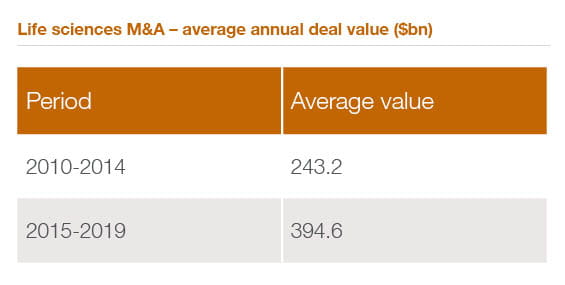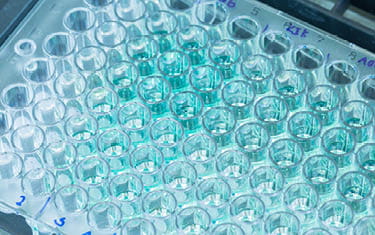USD200bn patent cliff set to spark new wave of life sciences M&A – but it might not look like the last one
Related people
Headlines in this article
Related news and insights
Publications: 21 March 2024
Publications: 21 March 2024
Publications: 21 March 2024
Publications: 21 March 2024
Patents on a series of blockbuster drugs are due to expire between now and 2030. Last time this happened it sparked a wave of industry consolidation – but today we expect a different type of deal-making
After a muted 2022 there was hope for a rebound in healthcare M&A in 2023. However, deal data for the year showed a continued decline, with M&A values and volumes, IPO activity and private investment all down year-on-year.
Within the numbers the picture is more nuanced, with the value of pure-play pharma M&A higher than at any point since before the COVID-19 pandemic. Some of this is the result of the patent cliff that’s set to wipe more than USD200bn in annual sales off the P&Ls of many of the world’s largest drug-makers between now and 2030, with M&A one way to offset the hit to revenues. The last time such a significant set of drugs came off-patent over a similar timeframe was at the turn of the last decade, when a wave of ever-larger deals followed. The average M&A values rose 62% between 2015-2019 compared to the previous five-year period, with Pfizer/Wyeth and Merck/Schering Plough among the most notable transactions.

Source: Refinitiv:
There are equally compelling reasons why the recent pharma buying spree may not foreshadow another wave of industry mega-mergers, however. For a start, many of the sector’s biggest names are facing the cliff together, meaning there’s a dearth of obvious peers with whom to attempt a revenue-protecting merger. As a result, forthcoming deal activity is more likely to involve big players bidding for biotechs and mid-tier companies.
Healthcare spending set to be U.S. election issue
The patented products themselves are also different – in the 2010s, the cliff mostly related to chemical drugs that were quickly replaced by generics, whereas this time there are more biologics involved. Biosimilars may not be as easy to substitute for existing products, meaning the revenue hit on patent-holders may not be so immediate or so catastrophic.
The effect of the U.S. Inflation Reduction Act and President Biden’s broader policy agenda to reduce drug prices must also be taken into account. The cost of prescription drugs is 2.5 times higher in the U.S. than in other advanced economies, and the issue is set to play a leading role in the upcoming presidential election. Developing biosimilars is an expensive process, and the likelihood of any future administration negotiating hard over payments for new therapies may result in less willingness to enter the space.
Antitrust environment more hostile to large-cap deals
The deal environment, too, has changed. Today the U.S. antitrust agencies are more hostile to large-cap M&A than they were a decade ago. The Federal Trade Commission stepped in to challenge Pfizer’s USD34bn acquisition of Seagen and litigated to block Amgen’s USD27.8bn deal for Horizon Therapeutics. The former remains in limbo, and while Amgen’s purchase was approved, the prospect of a lengthy regulatory battle may cause potential acquirors to consider options further down the food chain. Here, though, there is another cloud on the horizon. VC funding, the lifeblood of smaller innovators, has been falling over the past couple of years, potentially limiting the pipeline of businesses able to grow into viable acquisition targets.
On a more positive note, technology may provide the solution. One of the biggest health-tech funding rounds of the year – a USD60m Series B – involved the UK’s Causaly, which harnesses AI to speed-read scientific literature, regulatory documents and clinical trial data. AI offers the prospect of faster, cheaper and more accurate drug development, potentially meaning less investment is needed to bring new drugs to market in the future. Amid the general risk-averse sentiment that currently pervades the sector, life sciences companies continue to pursue strategic collaborations with AI developers as they search for ways to increase the efficacy of their R&D efforts.
Looking ahead, the safety net that protects life sciences companies from falling off the current patent cliff may come from these sorts of deals – rather than the sorts of multibillion-dollar acquisitions that were sparked by the last one.








